Campbellclanman
Platinum Member
- Joined
- Mar 10, 2007
- Messages
- 14,566
Dayam - Paul I can see why that stunner is your favourite my friend- what a beautiful Knife!
Thank you Jeff. Of the two I have, this one is my favorite.
Just jaw dropping gorgeous Paul. Matter of fact this entire page is amazing.Thank you Jeff. Of the two I have, this one is my favorite.
View attachment 1114004 View attachment 1114005 View attachment 1114006
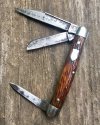
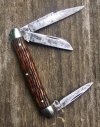
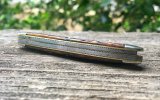
I agree Paul with skill being a premium when making the small scale versionsEven in this condition I believe these walden 808 (the cut co's are just number 8) 2 3/4" stockmans to be rather scarce with genuine bone handles. You will often see these hafted with black plastic peachseed, of which I have more than a few, but I have only seen just a handful in bone.
This little knife has had it rough, but through the pitting, dings and such you can easily tell it is very well made. These intrigue me because they are so small but made exactly like a larger stockman in quality and precision. I can only imagine it takes high skill to do that with something so small and tedious.
View attachment 1116957
View attachment 1116958
View attachment 1116954
 I appreciate what goes into those wee knives. What a beautiful knife you have there
I appreciate what goes into those wee knives. What a beautiful knife you have thereEven in this condition I believe these walden 808 (the cut co's are just number 8) 2 3/4" stockmans to be rather scarce with genuine bone handles. You will often see these hafted with black plastic peachseed, of which I have more than a few, but I have only seen just a handful in bone.
This little knife has had it rough, but through the pitting, dings and such you can easily tell it is very well made. These intrigue me because they are so small but made exactly like a larger stockman in quality and precision. I can only imagine it takes high skill to do that with something so small and tedious.
View attachment 1116957
View attachment 1116958
View attachment 1116954
Paul, or anyone else that can answer. What is the word or phrase, if there is one, for the pattern on the back of the brass liners and springs? I’ve seen it on a couple of the old Dwight Devine Scout knives and a few others. It’s probably not the same design but I’m curious what it’s called.
Thanks.
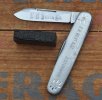
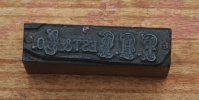
I think the official term is "jimping", some people will call it "coining" too because it looks like the edge of our U.S. coins.Paul, or anyone else that can answer. What is the word or phrase, if there is one, for the pattern on the back of the brass liners and springs? I’ve seen it on a couple of the old Dwight Devine Scout knives and a few others. It’s probably not the same design but I’m curious what it’s called.
Thanks.

Craftsman 9488. My flatbed scanner destroyed the blade finish and etch, but it couldn't intimidate that peachseed bone.View attachment 1138017 View attachment 1138018
